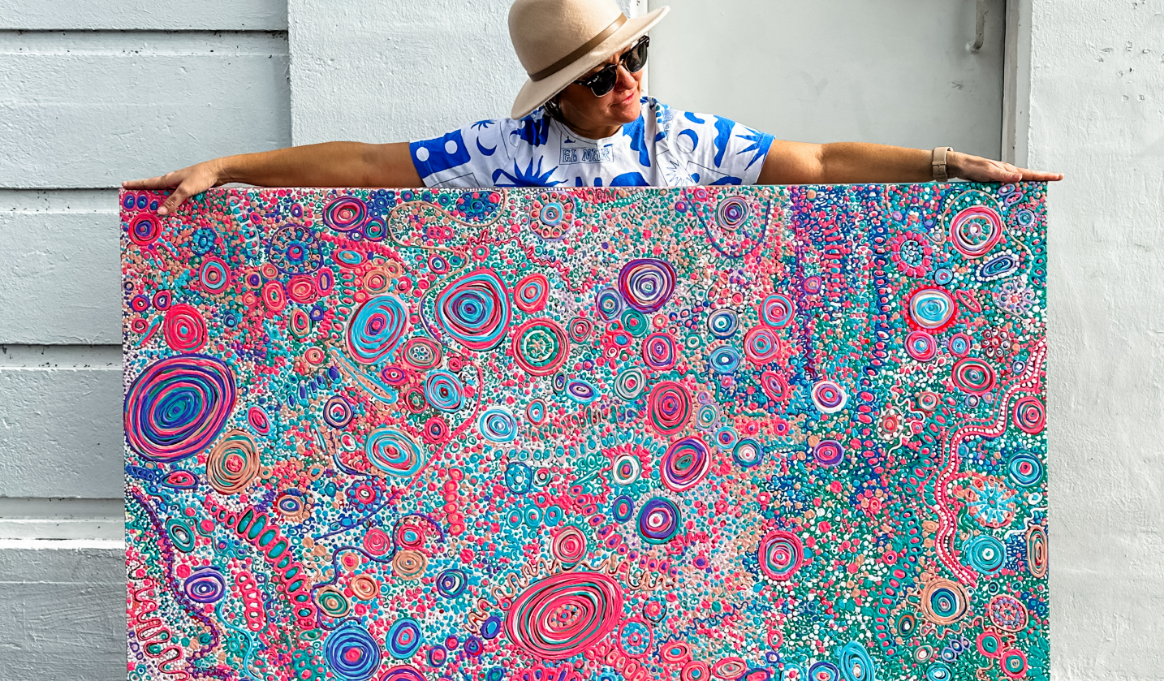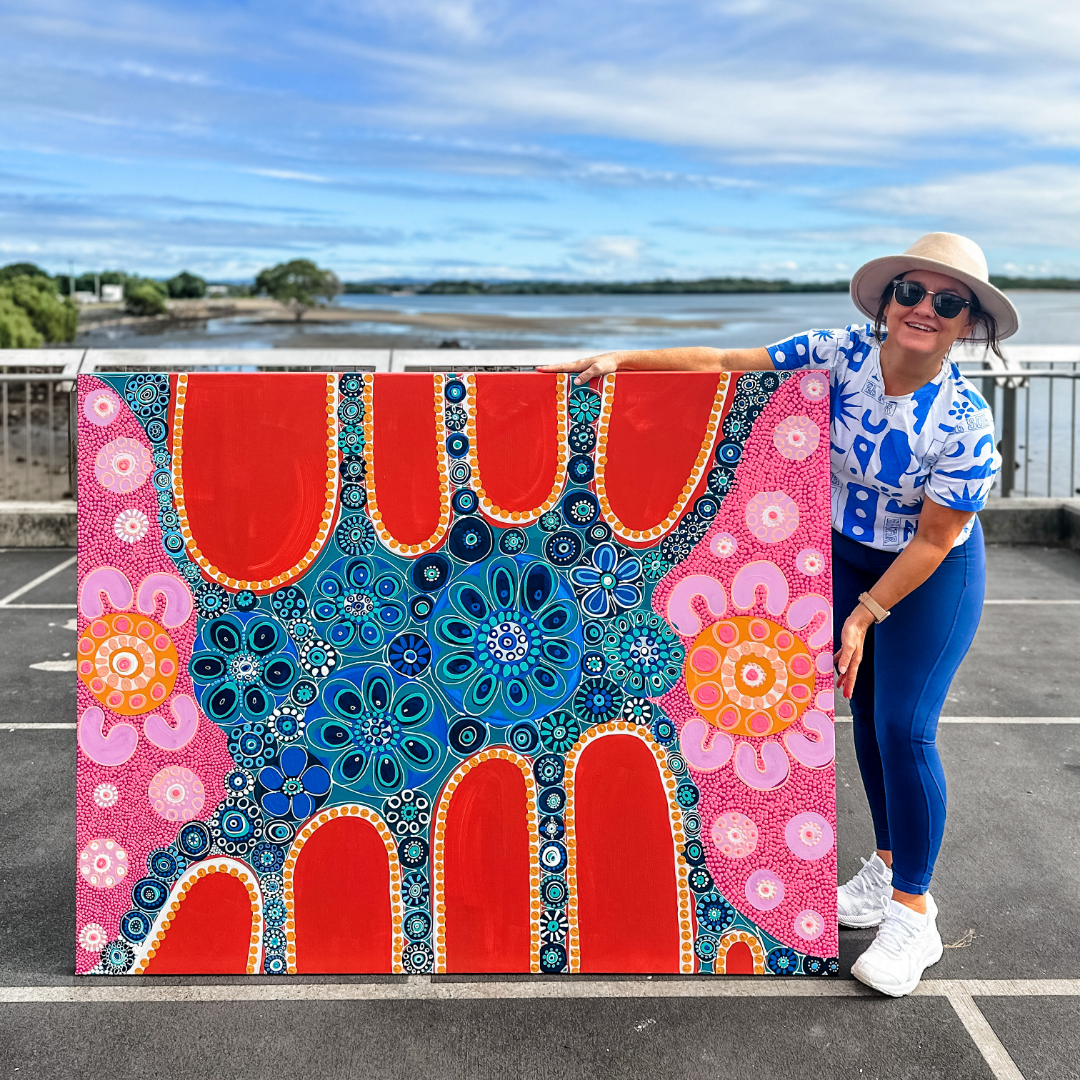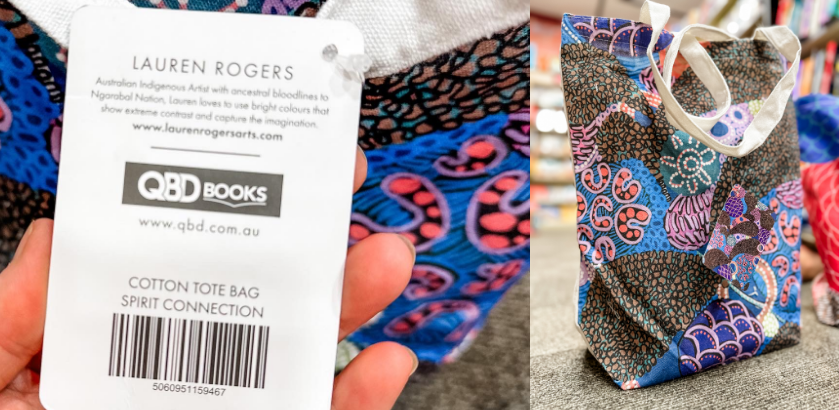Ngarabul and Torres Strait Islander artist Lauren Rogers talks about the inappropriate use of First Nations artwork and its cost to culture.

Lauren Rogers is a contemporary Indigenous artist with Ngarabul and Torres Strait Islander roots. A self-taught artist, Lauren’s vibrant work can be seen displayed in homes across Australia.
Lauren draws inspiration for her artwork from Country, community and culture. Her work incorporates symbolic elements and motifs that reflect her cultural identity.

These symbols are deeply connected to my heritage and my relationship with Country, family, and the environment. They hold personal significance and are used to convey stories and teachings passed down through generations,’ Lauren explains.
With Lauren’s use of vibrant colours and intricate patterns, it’s no wonder her artwork is coveted by buyers at the higher-end of the market, while brand collaborations with the likes of Australia Post and others mean her designs also feature on more accessible pieces like water bottles, bags and enamel pins.
As Lauren’s art has gained popularity, she’s experienced times when elements of her style and symbolic motifs have been reproduced without her consent.
‘This has been disheartening, as it undermines the cultural significance and personal connection I have to my work. It also disrespects the traditions and intellectual property of Indigenous artists, leading to misrepresentation and a lack of cultural understanding.’
Inauthentic Indigenous-style products are a pervasive issue. A 2022 report by the Productivity Commission found that up to 75% of Indigenous-style consumer products in the market are non-Indigenous authored.
For Lauren, the highest cost is to culture.
‘Misappropriation or misuse of our art harms the broader community by disconnecting people from the deep cultural meanings and stories behind the artwork.’
So how can you tell if a product you’re buying with a First Nations design is authentic? The easiest thing to do is check it includes information about the artist and the artwork.

We’re working on new laws to protect Indigenous Cultural and Intellectual Property, including to address the harm caused by fake art, merchandise and souvenirs. Watch our video series with First Nations artists and industry workers talking about the effect fake art has had on them and their communities.
Find out more about what we’re doing to protect Indigenous Cultural and Intellectual Property rights.
Find out more
- Visit Lauren’s website
- Watch our videos

